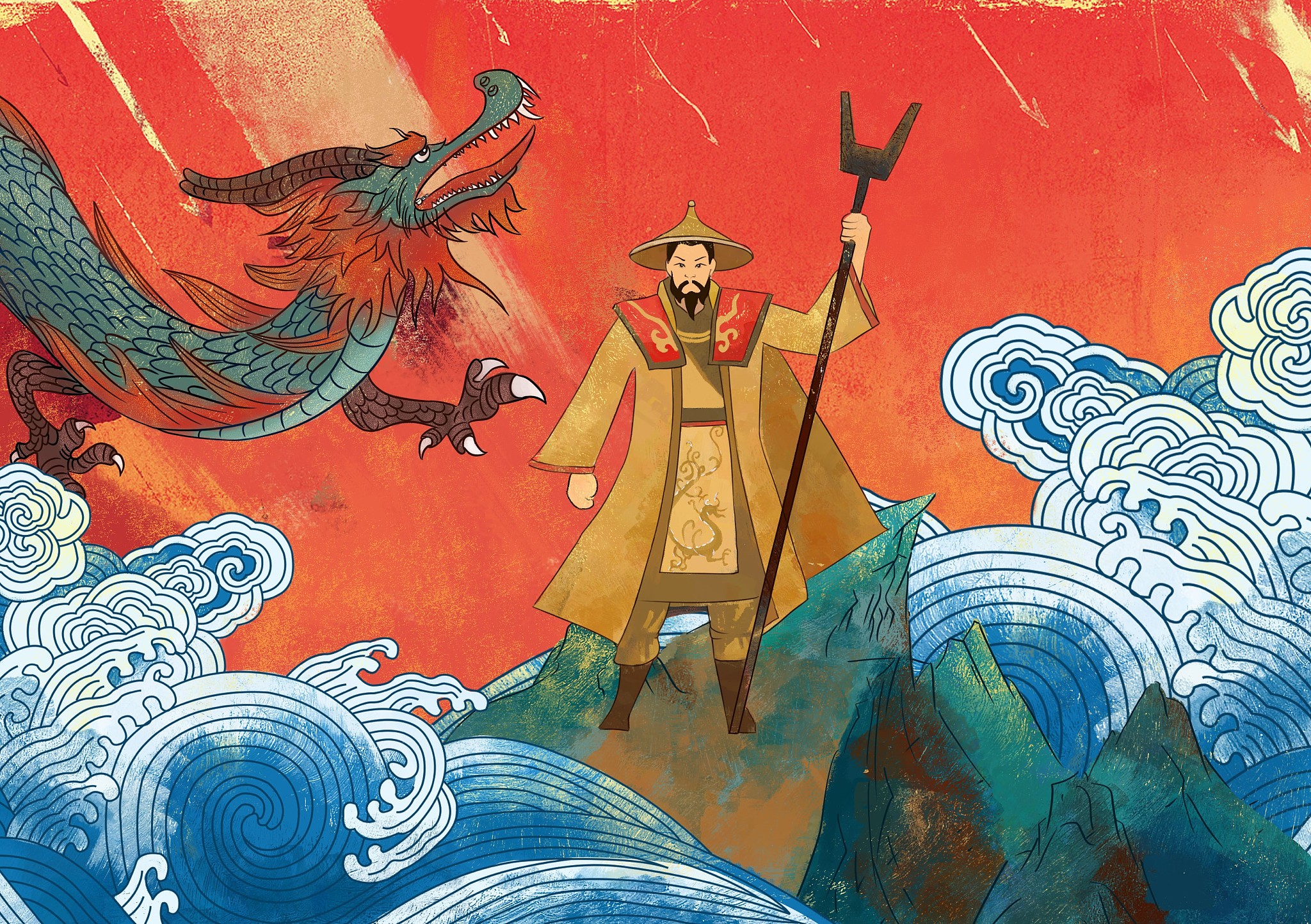King Yu, Tamer of the Floods

A picture tells the story of how King Yu controlled the flood. (PHOTO:VCG)
By WEN Haoting
King Yu is among China's most famous ancient rulers, who is also known for his wisdom and contribution in flood prevention.
According to legend, in ancient times, Chinese people were suffering from constant flooding.
To control and prevent the damage caused by flooding, King Shun (the ruler before King Yu) appointed Gun (King Yu's father) and Yu to lead in the flood control team.
At first, King Yu's father focused on "blocking" the riverway by building a lot of water dams, but it did not ease the river currents, instead it worsened the overflow of water and caused even more damage.
After that, King Yu took over the task and changed strategies completely after thorough research on his father's methods. Instead of "blocking" the waterway, he decided to "guide" the river currents. In areas with heavy rainfall, he had canals built, which discharged flood waters efficiently. In addition, he worked alongside local villagers to dredge the riverbeds, which opened up water courses and allowed floodwaters to flow into oceans, and set up the agricultural irrigation system.
Legend also has it that King Yu left his home for thirteen years to fulfill his duties. There were three times that he passed by his house, but he didn't allow himself to go in because of the fear of delaying the task.
Due to his efforts, the frequent flooding in China was controlled. People no longer had to migrate each time after flooding. They were able to settle down near the Yellow River, where China's first agricultural civilization was established.
King Yu was selected to succeed to the throne. His dedication and sacrifice moved a lot of people. For thousands of years, people worshiped him for protecting them from natural disasters.

